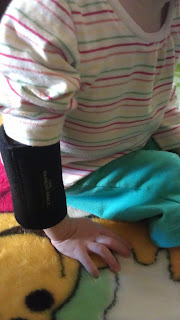See those quotes above? The one in the middle is me! Back in July (or maybe August), OT Practice Associate Editor, Andrew Waite, contacted me and asked if I'd be interested in being interviewed for an upcoming article. I said yes, and I managed to get a line in the article! Burnout is a serious problem in helping professions, such as OT. Whether you're feeling burned out or not, I recommend you take a look at the article in the most recent issue of OT Practice.
And now, here are some other articles and blog posts worth reading, if you find yourself with some extra time this weekend.
- I haven't tried the new Handwriting Without Tears Wet-Dry-Try app, but there has been a lot of buzz about it on the web. Carol Leynse Harpold, of OT's With Apps, shares her thoughts on the app here. I love that she focused on how to incorporate real manipulative tools into the use of the app, since that is the heart of the Handwriting Without Tears curriculum. She also made a good point about the use of a stylus and that all styluses are not created equal - to promote a tripod grasp, make sure the stylus you're using has connectivity using the edge of the stylus, when held at an angle. Check out her post for photos if my description doesn't make sense :)
- I'm a little late on this one, but be sure to read this article from The Atlantic, "iPods as the Next-Generation Autism Aid". It features the research of an occupational therapist using iPods with young adults with autism. Yay for OTs getting out there and being heard!
- I came across a few good articles on parent and children's rights. The first one was the story of Maya when she and her family moved to a new state and the process of transferring her son's services across states. Read her story on Love That Max. Special-Ism ran a great article called IEP's and Evidence! Written by a lawyer, this article explains in easy to understand terms why it is a good idea for parents to collect evidence and how to do it. By collecting evidence this will help parents support their case if there is ever any wrongdoing. I'm hoping by parents becoming more savvy, there won't be so many cases of children not being given the education or services they are entitled to.
- Dr. Zachry of Pediatric Occupational Therapy Tips shared an easy way to teach children to cut on the lines using a simple DIY tactile cue. You can see what she did by clicking here.
- Okay, this one doesn't require much reading. If you haven't seen this short film, One, I highly recommend you check it out. This is a touching film by a woman whose brother has cerebral palsy. It's only ten minutes and well worth your time!




























